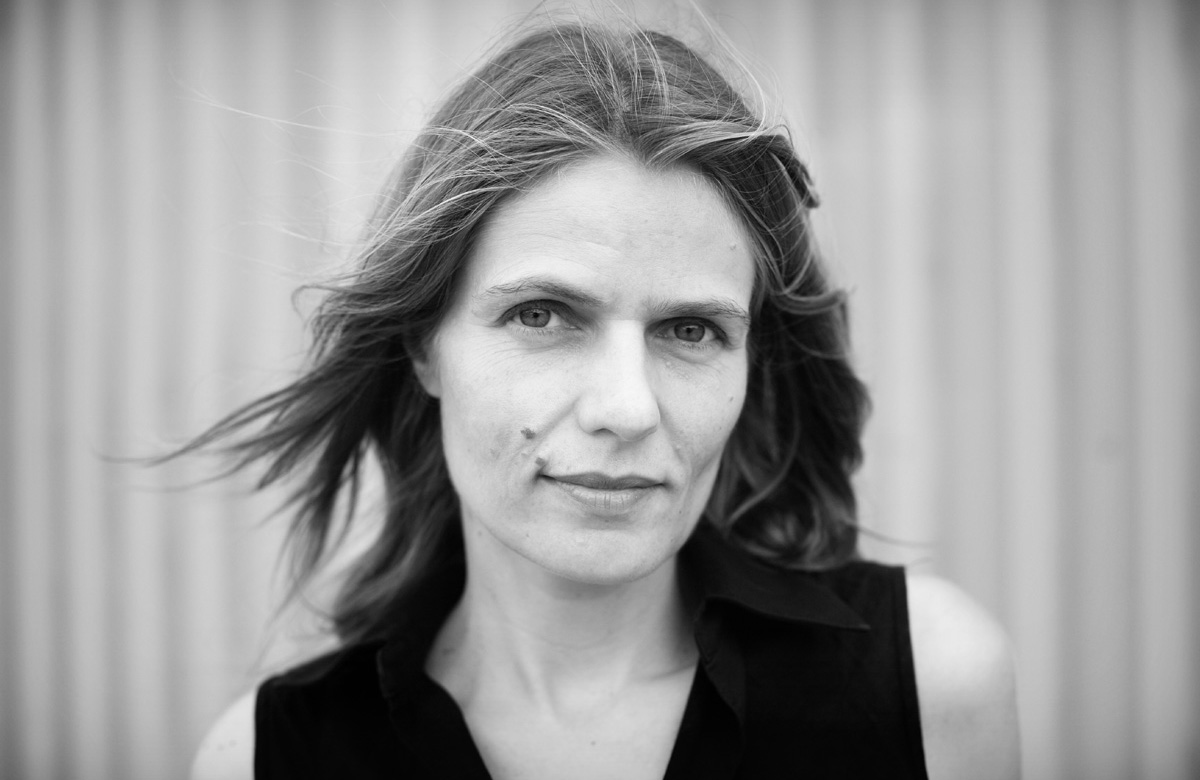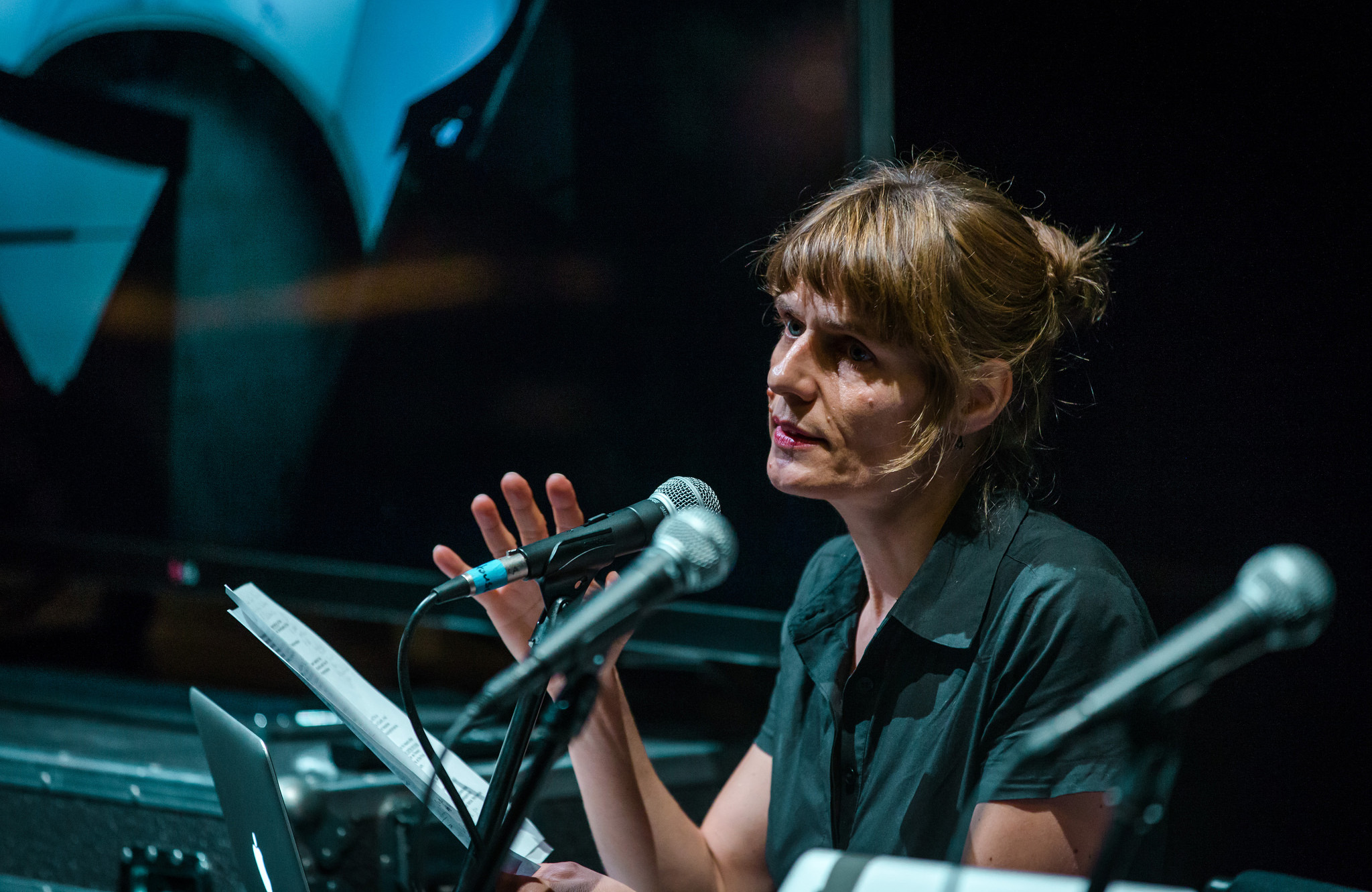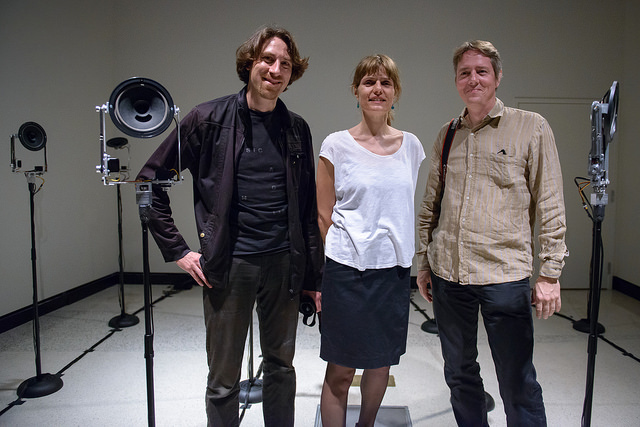UC San Diego Professor Appointed Composer in Residence at Qualcomm Institute
San Diego, December 5, 2016 — Composer and multimedia artist Katharina Rosenberger, an associate professor of music at the University of California San Diego, has been appointed composer in residence at the Qualcomm Institute, the UC San Diego division of the California Institute for Telecommunications and Information Technology (Calit2).

The residency is jointly supported by the Qualcomm Institute, the Department of Music, and the Division of Arts & Humanities, all at UC San Diego.
“We are delighted to welcome Professor Rosenberger to the institute, where we are always looking for ways to push boundaries at the intersection of the arts and technology,” said Qualcomm Institute director Ramesh Rao, a professor of electrical and computer engineering in the Jacobs School of Engineering. “Each of our previous composers-in-residence reached out to different sets of collaborators, resulting in remarkable works that are exemplars of interdisciplinary research, and we now look to Katharina to put her own mark on the institute.”
A recent composition by Rosenberger, “tempi agitati,” will be performed Thursday Dec. 8 at UC San Diego in the music department’s Conrad Prebys Concert Hall by the contemporary vocal quartet, Neue Vocalsolisten. The work is based on texts by Italian poet Petrarch set to music by Rosenberger and her reworking of madrigals by the Renaissance masters Adrian Willaert and Cipriano de Rore. A finely attuned lighting design follows the vocalists as their choreography is directly influenced by the composition's tone and tempo.

Given that much of her work manifests in an interdisciplinary context, the composer and artist expects to collaborate with neuroscientists, engineers, software developers, and other technologists. “The appointment gives me the tools and people that I need to develop new work,” Rosenberger said. “I want to partner with a neuroscientist and I will use the institute’s Audio Spatialization Lab to experiment with near-field and far-field sound.”
Rosenberger is developing a project that will use elements including electroencephalogram (EEG) scans of her own brain to create multisensory installations. In preliminary research, she has been drawn to architectural shapes generated by interactive visualization tools similar to those used in her installation VIVA VOCE. Some of these resemble organic forms found in nature, or in experimental architecture. “I also want to find ways to make my installations interactive, so that the responses of visitors influence the environments.”
The artist is not a newcomer to the intersection of music and technology: several of her earlier works have utilized scientific elements. A composition for solo saxophone, for instance, incorporated melodic lines and rhythmic sections influenced by mathematics and the logarithmic spirals of a nautilus shell.
Although Rosenberger’s compositions are sometimes performed in concert halls, she often chooses architectural spaces. Her interactive sound and video installation VIVA VOCE was presented in subterranean vaults at the Reservoir in Berlin-Prenzlauer Berg, Germany. Meanwhile, the nocturnal performance “madrigali notturni” premiered at the Arne-Jacobsen-Foyer, a two-story glass construction divided by a suspended gallery at the Herrenhausen Castle in Hanover, Germany. Singers’ voices echoed in reverberant spaces as they carried candles and moved through colored pools of light. At various points, confetti floated down to produce glittering clouds and flurries of sound.

You can hear Rosenberger’s music on CD, most recently the Wet Ink Ensemble’s recording of “TEXTUREN” (2014). Her installations can be viewed on YouTube and Vimeo.
Rosenberger grew up in Switzerland playing piano, singing, and composing short pieces. She studied jazz at the Berklee College of Music in Boston and filmmaking at the Massachusetts College of Art and Design. Subsequently she attended Columbia University, where she earned a Doctor of Musical Arts degree in 2008, and joined UC San Diego’s music faculty the same year.
The new appointment is not Rosenberger’s first project with the Qualcomm Institute. In 2010, she and QI’s Peter Otto co-organized a joint workshop on listening and 3D audio recording techniques. It took place in the institute’s Audio Spatialization Lab in collaboration with the Swiss Institute for Computer Music and Sound Technology (ICST).
Rosenberger also participated in an artist discussion in November 2014 to launch the exhibition “Body Practices” in the gallery@calit2, which explored notions of virtual and physical presence through art works by Ursula Damm, Electronic Disturbance Theater/b.a.n.g. lab, Desiree Holman, Tara Knight, Alex McLean, Bryce Clayton Newell and Victoria Vesna. In the fall of 2015, she hosted a team from Switzerland’s ICST, who deployed their Immersive Lab platform as a media space in QI’s Performative Computing Lab.
Rosenberger said she is grateful for the support of Qualcomm Institute director Ramesh Rao. Her project collaborators include Peter Otto, founding director of the institute’s Sonic Arts R&D group, and QI research scientist Jurgen Schulze, who is also a lecturer in the Computer Science and Engineering department. Trish Stone, production coordinator of the Composer in Residence Program, will assist Rosenberger during her residency.
The composer is the fourth UC San Diego music faculty member to hold the position following Roger Reynolds (2007-2010), Rand Steiger (2010-2013), and Lei Liang (2013-2016). Her two-year appointment in the Qualcomm Institute is not her first residency. In 2012 she was composer in residence at ICST in Zurich; in 2007, at the Centre National de Création Musicale in Marseille; and in 2005, with France’s Orchestre de Nimes.
Media Contacts
Dirk Sutro, 858-534-4830, dsutro@ucsd.edu or Doug Ramsey/QI, 858-822-5825, dramsey@ucsd.edu
Related Links
Katharina Rosenberger Website
VIVA VOCE
madrigali notturni
Qualcomm Institute
Department of Music
Division of Arts & Humanities

